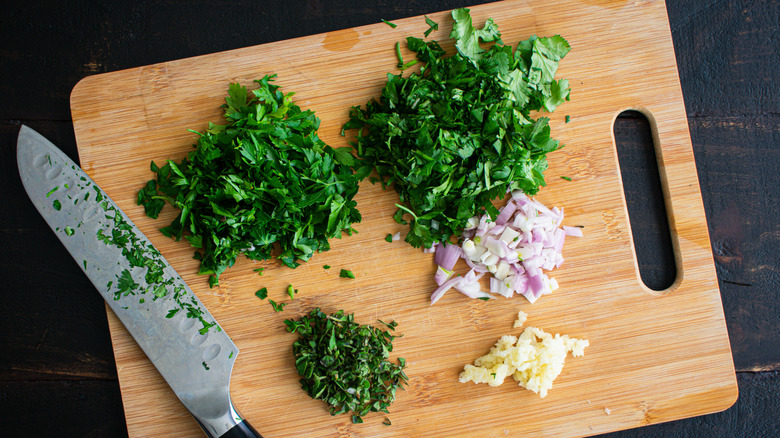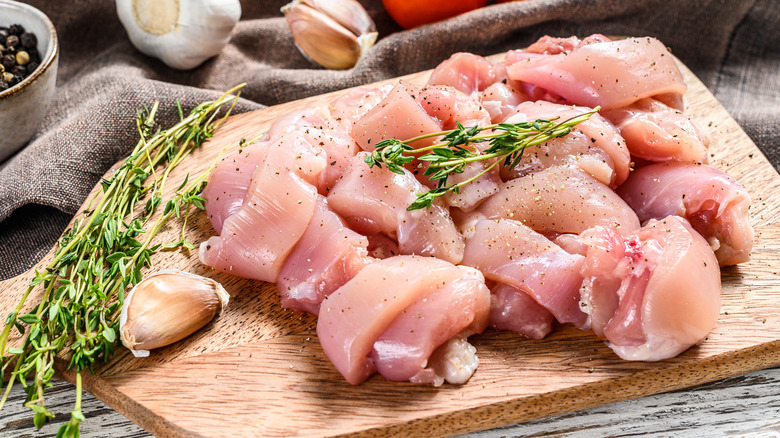Is It Safe To Use The Same Cutting Board For Everything?
There was a time when there weren't too many options available for cutting boards — and that we could only choose between wood and plastic. But those times are long gone, and today, our options range between different types of wood, plastic, glass, marble, and ceramic. But what hasn't changed is the recommendation that we use one board for cutting meats, seafood, and poultry — and another one for produce and bread. The recommendation stems from the way meats, seafood, and poultry behave when they're being sliced up.
As Butcher Block Boards points out, whether or not we realize it, meats, poultry, and seafood ooze liquid as pieces are being sliced, and once that liquid is secreted, it doesn't take long to make its way into the crevices created by tiny scratches if the boards are plastic, or pores if the board is made of wood. These juices play host to pockets of bacteria that can then transfer from the meats and seafood you just cut to the fruits, produce, or even cheese that you might have chosen to lay on the same board — this is when cross-contamination happens. And before you dismiss the idea that you need at least two boards to cut up your food, Food Safety says an estimated 1 in 6 Americans come down with food poisoning every year.
Use different cutting boards for different foods
The Food Safety and Inspection Service has issued recommendations on how to wash your cutting boards — and that is they all need to be washed with hot, soapy water after every use, rinsed with clean water, and either air dried or pat dried using paper towels. Acrylic, plastic, and wood boards can be put in a dishwasher. Wood and plastic boards can also be deep cleaned with a solution of liquid (unscented) bleach and water.
Because bacteria can grow even after a board has been thoroughly washed, it's further recommended that cutting boards be replaced when they become worn through by knife scratches and cracks. But the best part about discarding old chopping boards means you can go shopping to replace them. As such, the USDA says it is best to cut meat on non-porous cutting boards (think plastic or acrylic, making them easier to disinfect), while your wooden board isn't likely to suffer too much if it becomes the place on which fruits, produce, and breads are prepped.

